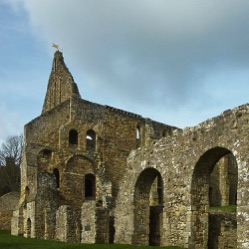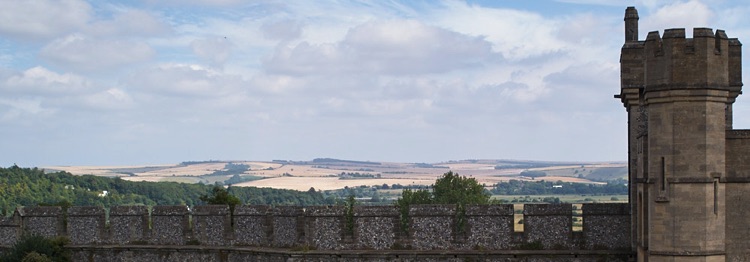
History
Work on Battle Abbey was begun in 1070 by William I. The Abbey was built on Senlac hill, the site of the Battle of Hastings. The Pope had ordered the Abbey built by William I, as penance for the loss of Christian life and plunder taken from the English during the conquest. The Benedictine abbey was named for St Martin by the monks, but William ordered the abbey be called Battle as a reminder to the English of his crushing victory over them.
The south wall of the abbey is said to be close to line held by the saxons shield wall and the chapel alter was built on the spot where King Harold was cut down. However, there is some debate as to the location of the battlefield for the Battle of Hastings, as no archeolgoical evidence of a battle has ever been found near the abbey.
Initially work on the abbey was slow, with construction supervisors chiefly interested in maximizing their profits. The speed of construction improved after the appointment of Gausbert, as abbot in 1076. William’s first choice of abbot, Robert Blancard was drowned in a storm off the sussex coast on route to accept his new responsibilities. William I never saw the abbey finished, but his son William II consecrated the abbey in February of 1094 after work was completed.
The extent and ownership of the abbey lands was in dispute for many years until the matter was finally settled by Henry II in the summer of 1155. The royal seal was attached to the abbey charter and the charter presented to abbot Walter de Luci. The abbey was fortunate at that time, that the abbot’s brother, Richard de Luci was one of Henry II closest councillors.
The fortified gate house was rebuilt in the fourteenth century to help defend the south of England against raids by the French.
The Abbey was home to a thriving community of Benedictine monks, until the black death heavily depleted their numbers in the 15th century. The abbey never fully recovered and struggled to survive until Henry VIII's dissolution of the monasteries in 1538.
Battle Abbey
Highlights
Ruined, but substancial masonry structures remain
Dorter and reredorter, the dormitory and communal privy
Common room and fortified gatehouse
Interior exhibits showing history
Visitor Information
Open year round with paid admission, free for members of English Heritage
On site parking, bathrooms and gift shop
Pubs and cafes in the village
Gallery
Map
Website



